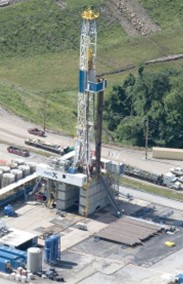Helium production is directly related to the ways the gas exists in nature and the properties of the gas itself. EF Gases is a leading producer of the world’s helium supply and optimizes helium’s natural properties in order to stabilize and deliver it.
Helium Properties
Helium is used in large quantities in a wide range of applications that take advantage of its properties. Helium’s properties can be summarized by describing it as the lightest of noble gases. It is nonreactive, has a very low atomic mass, and has a very low boiling point at 3.2 Kelvin, just above absolute zero (-452.07°F or -268.93°C).
The inertness makes helium ideal for welding, aerospace pressurization, pressure testing, semiconductor manufacturing, and research. It is used to pressurize rocket fuels to force them into rocket engines without reacting with the fuels. With the small atomic size and inertness, helium will slip through gaps other gasses will not, making it ideal for leak detection. In addition to leak detection, helium is used in laboratories for an inert atmosphere, as a temperature standard, and as a carrier in gas chromatography. A mixture of helium and oxygen is used as a breathing gas for deep divers who work under high pressures.
The low atomic mass results in lightness, making helium less dense than air, which makes it useful for providing lift for blimps, weather balloons, and party balloons. The inertness, not being flammable, is a plus for these applications too.
With the low boiling point, liquid helium is used to cool some magnets making them superconducting, which is necessary for magnetic resonance imaging (MRI) and some big physics superconducting colliders, like at Fermi Lab or CERN.
Helium On Earth & In The Universe
The universe is 23% by mass helium. Even though it is an abundant element in the universe, helium is a rare gas on earth only with an atmospheric concentration of only 0.000524% (5.24ppm) by volume. Helium is continually added to the atmosphere and is lost from the atmosphere to space. The small helium atoms move fast enough to escape the earth’s gravity.
Helium is formed inside the earth from the radiological decay of elements such as uranium and thorium. It is trapped in and can be extracted from geologic formations in the earth. Most helium is produced as a by-product of natural gas as it is trapped in many of the same formations that contain the natural gas. Some helium comes from purpose-drilled wells in formations where natural gas isn’t present. This is different from the production of other rare gases which are mostly produced by cryogenic distillation of air. Only a small amount of helium is collected from the air at air separation units (ASUs).
EF Gases & Helium Production
The amount of helium in natural gas varies from negligible amounts to percent levels. The production is more economical and more frequent from natural gas with higher levels. Helium is separated from the natural gas using fractional distillation (to remove nitrogen) and cryogenic cooling (the helium stays gaseous when natural gas is cooled to produce LNG). The helium is purified using activated carbon, molecular sieve, catalysts, and dryers. It is produced around the world and is transported to where it is needed in cryogenic ISO containers.
At our Hatfield helium transfill facility, we take liquid helium from ISO containers to fill dewars for liquid use and to fill tube trailers and cylinders with gaseous helium. This process involves vaporization of the liquid helium and further purification. The purity of the helium is determined and documented by our on-site laboratory.
To learn more, speak to one of our experts today.
